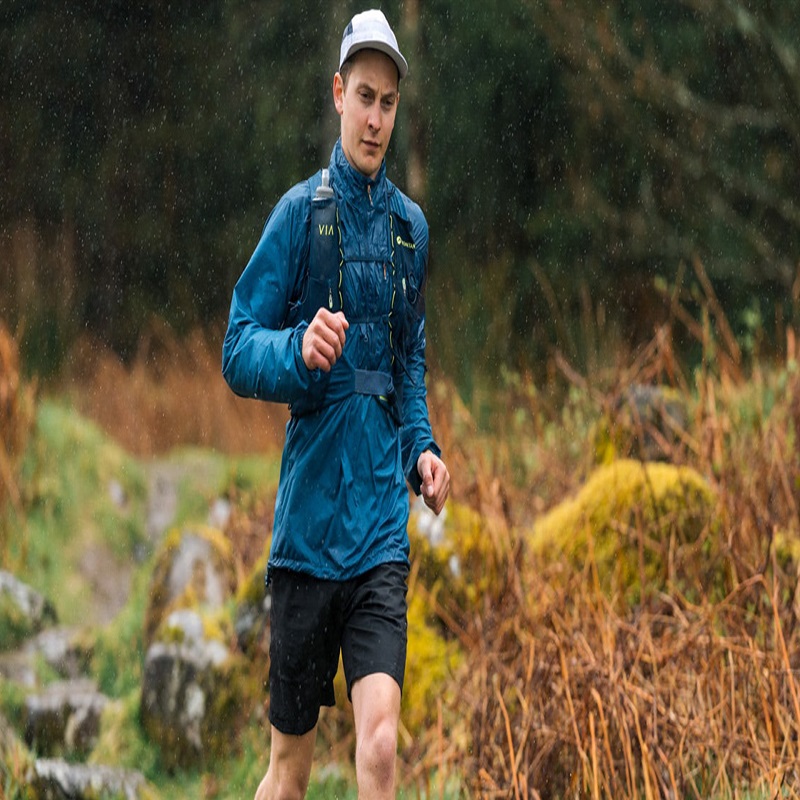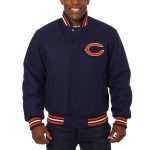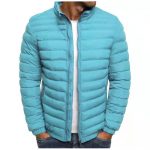Choosing the best running jackets is essential for a comfortable and enjoyable running experience. Whether you’re an avid runner or a beginner, a good running jacket can provide protection from the elements while allowing proper ventilation and freedom of movement. In this guide, we will explore the key factors to consider when selecting the best running jacket, including fabric choice, weather resistance, fit, breathability, visibility features, and additional considerations. Let’s dive into the world of running apparel and discover how to choose the perfect running jacket for your needs.
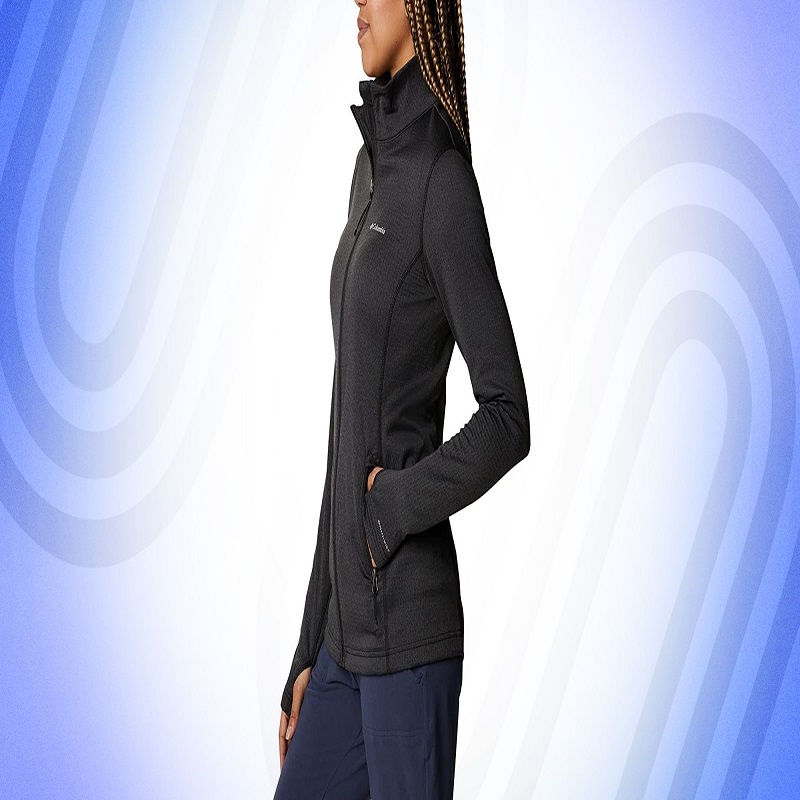
Fabric Choice:
The fabric of a running jacket is one of the most critical factors in determining its performance, comfort, and overall effectiveness during workouts. Choosing the right material ensures that the jacket not only protects you from the elements but also enhances your running experience by providing breathability, flexibility, and moisture management. Here’s a closer look at the key considerations when selecting fabrics for your ideal running jacket.
1. Lightweight and Moisture-Wicking Materials
When it comes to running jackets, lightweight materials are essential for maintaining comfort without adding unnecessary bulk. Polyester and nylon are two of the most popular choices due to their exceptional ability to wick moisture away from the skin.
- Moisture Management: Polyester and nylon are hydrophobic fibers, meaning they repel water and allow sweat to evaporate quickly. This feature helps keep you dry and comfortable, even during intense runs or in humid conditions.
- Breathability: These synthetic fabrics are engineered to enhance airflow, preventing overheating while still offering protection against wind and light rain. Look for jackets with mesh panels or ventilation zones for added breathability.
2. Stretch and Flexibility
Running requires a full range of motion, so the fabric of your jacket should provide ample stretch and flexibility. Fabrics blended with spandex or elastane offer excellent elasticity, allowing the jacket to move seamlessly with your body.
- Unrestricted Movement: Jackets made with stretchable materials prevent any restriction or discomfort, ensuring that arm swings, strides, and other dynamic movements remain unhindered.
- Shape Retention: High-quality stretch fabrics also maintain their shape over time, resisting sagging or stretching out after repeated use.
3. Anti-Odor Properties
Sweat buildup during long runs can lead to unpleasant odors caused by microbial bacteria. Many modern running jackets incorporate anti-odor technologies to combat this issue.
- Odor Control: Fabrics treated with antimicrobial agents inhibit the growth of odor-causing bacteria, keeping your jacket fresher for longer. This is particularly beneficial for runners who train frequently or in warm weather.
- Hygiene Benefits: Anti-odor properties reduce the need for frequent washing, which not only saves time but also extends the life of the garment by minimizing wear and tear.
4. Weather-Resistant Features
While breathability and moisture management are crucial, the fabric should also protect you from adverse weather conditions. Look for options that combine performance with durability.
- Water Resistance: Many running jackets feature DWR (Durable Water Repellent) coatings or laminated membranes to repel light rain and snow. These treatments ensure you stay dry without compromising breathability.
- Windproof Layers: Fabrics designed to block wind help regulate body temperature and prevent chills during chilly morning runs or blustery days.
5. Durability and Longevity
A high-quality running jacket should withstand the rigors of regular use while maintaining its performance. Densely woven polyester and ripstop nylon are known for their strength and resistance to abrasion, making them ideal for enduring outdoor activities.
- Tear Resistance: Ripstop fabrics are engineered to prevent tears from spreading, ensuring the jacket remains intact even if snagged on branches or other obstacles during trail runs.
- Fade Resistance: Advanced dyeing techniques and UV-resistant finishes help preserve the jacket’s color and appearance, even after prolonged sun exposure.
6. Sustainability Considerations
As environmental awareness grows, many brands now offer eco-friendly running jackets made from recycled materials. These fabrics are derived from post-consumer plastic bottles or other sustainable sources, reducing waste and promoting circular fashion.
- Eco-Friendly Options: Recycled polyester and nylon deliver the same performance benefits as virgin materials while minimizing environmental impact.
- Ethical Manufacturing: Choose brands committed to ethical practices, such as reduced water usage and chemical-free treatments, to support sustainable innovation in activewear.
By carefully considering the fabric of your running jacket, you can ensure it meets your specific needs and enhances your performance on the road or trail. Lightweight, moisture-wicking materials like polyester and nylon provide the foundation for comfort and functionality, while additional features such as stretch, anti-odor properties, and weather resistance elevate the jacket’s versatility. Investing in a well-made running jacket crafted from high-performance fabrics will not only improve your running experience but also stand the test of time, making it a reliable companion for countless miles ahead.
Weather Resistance:
Weather resistance is a crucial factor to consider when selecting a running jacket. Depending on your climate and running conditions, choose a carhartt jackets that offers appropriate water resistance or waterproofing capabilities. Look for jackets with a durable water repellent (DWR) finish or a waterproof membrane to keep you dry during wet weather runs. If you frequently run in cold or windy conditions, consider jackets with windproof features to provide additional protection.
Reflectivity and Visibility:
For those who prefer running early in the morning or in low-light conditions, visibility features are essential for safety. Look for running jackets with reflective elements, such as reflective strips or logos, that enhance your visibility to motorists and other pedestrians. Additionally, some jackets come in high-visibility colors that further enhance your presence on the road.
Fit and Comfort:
Choosing a running jacket with the right fit is crucial for optimal comfort and performance. Look for jackets that offer a slim or athletic fit, ensuring that they are not too loose or too tight. A well-fitting jacket should allow freedom of movement without excess fabric that can hinder your stride. Consider features like adjustable cuffs, hems, or hoods to further customize the fit for maximum comfort.
Breathability and Ventilation:
Breathability is a key factor to consider when selecting a running jacket. Look for jackets that offer proper ventilation, such as mesh panels or strategic venting, to allow heat and moisture to escape during your run. Good airflow and breathability help regulate body temperature, preventing overheating and excessive sweating. This is particularly important during intense workouts or in warmer climates.
Pockets and Storage:
Consider the amount and placement of pockets when choosing a running jacket. Pockets can provide convenient storage for essentials like keys, phone, energy gels, or other small items. Look for jackets with secure zippered pockets or mesh pockets that won’t bounce or hinder your movements during the run. Consider jackets with multimedia pockets that allow easy access to music devices or headphone routing options.
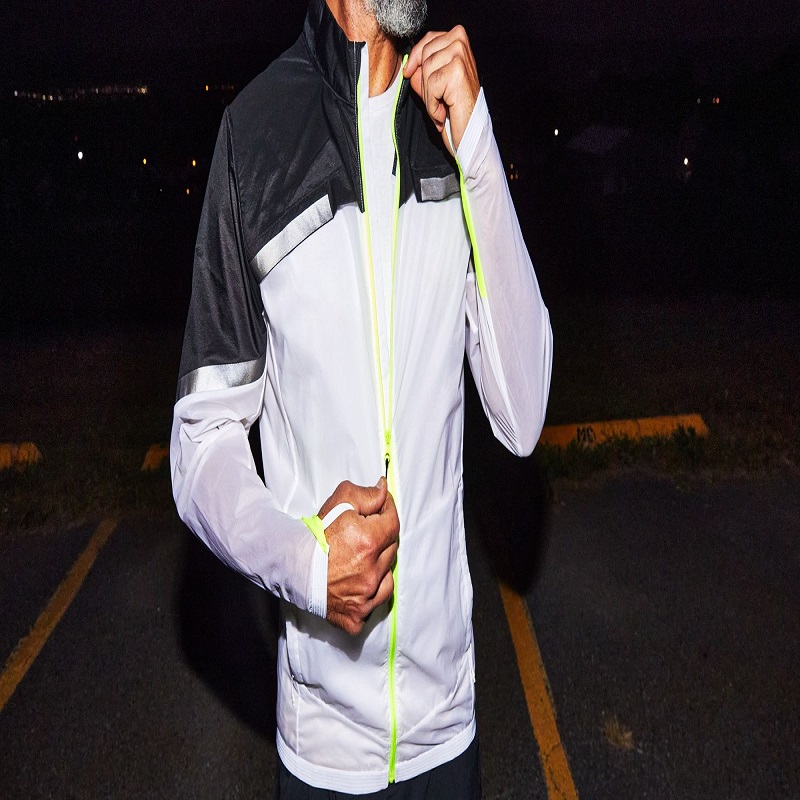
Additional Features:
Pay attention to additional features that could enhance your running experience. Some jackets come with adjustable hoods or detachable hoods that provide added protection during rainy or windy runs. Thumbholes in the cuffs can provide extra coverage and help keep your hands warm. Reflective trim in the hood or on the sleeves can further enhance your visibility. Consider these features based on your specific running needs and preferences.
Price and Quality:
While it’s important to consider your budget, keep in mind that investing in a high-quality running jacket can provide long-term benefits. A good-quality jacket will be durable, withstand repeated use and washing, and offer reliable performance. Research reputable brands known for their quality running apparel and read reviews from other runners to ensure you’re making a wise investment.
Advantages of best running jackets
Choosing the best running jacket is essential for every runner who wants to maximize their performance and comfort. A well-designed riding jackets offers a range of advantages, from weather protection and breathability to visibility features and storage options.
Weather Protection:
One of the primary advantages of the best running jackets is their ability to provide protection from various weather conditions. Whether it’s rain, wind, or cold temperatures, these jackets are designed to shield you from the elements. Waterproof or water-resistant running jackets help keep you dry during wet weather runs, while windproof jackets prevent chilly gusts from penetrating your clothing layers. The weather protection offered by these jackets ensures that you can continue running comfortably without being hindered by adverse conditions.
Temperature Regulation:
Running jackets offer excellent temperature regulation that keeps you comfortable throughout your run. In cold weather, they provide insulation by trapping warmth close to your body. Many jackets also have features like adjustable hoods, cuffs, and hemlines that allow you to customize the fit and block out drafts. Some jackets offer innovative ventilation systems and breathability, allowing excess heat and moisture to escape during intense workouts or runs in warmer weather conditions. These features contribute to regulating your body temperature and preventing overheating or excessive sweating.
Moisture Management:
Another significant advantage of the best running jackets is their ability to manage moisture effectively. These jackets are made from breathable materials that wick sweat away from your body, ensuring you stay dry and comfortable during your run. Moisture-wicking properties prevent the buildup of sweat, reducing the risk of chafing, irritation, and discomfort. The ability of running jackets to efficiently manage moisture enhances your overall comfort and improves your running performance.
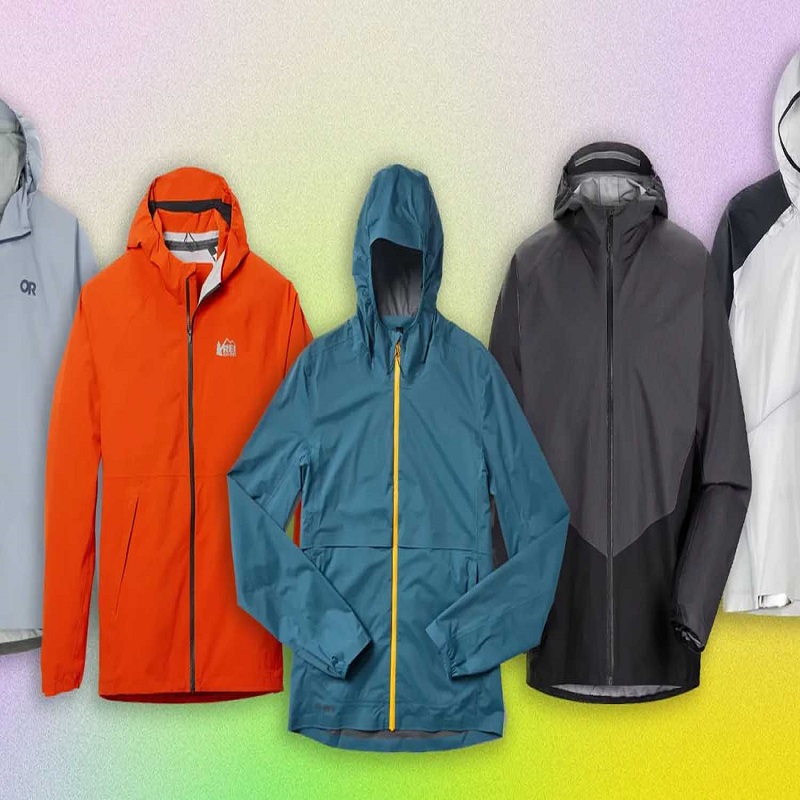
Enhanced Visibility:
Visibility is a crucial consideration, especially when running in low-light conditions or high-traffic areas. The best running jackets address this concern by incorporating visibility features. Reflective accents, strips, or logos are strategically placed on the jacket to ensure you remain visible to motorists and pedestrians. This increased visibility significantly reduces the risk of accidents, making your runs safer. Whether you’re running during early morning hours or in the evening, the visibility-enhancing features of running jackets provide an added layer of safety.
How to match best running jackets
The best running jackets not only provide comfort and protection during your runs, but they can also be styled in various ways to create fashionable and functional running outfits. Pairing your running jacket with the right pieces and accessories can enhance your overall look while ensuring optimal performance.
Layering:
Layering is key when it comes to styling your running jacket. Choose moisture-wicking base layers, such as lightweight and breathable technical t-shirts or long-sleeve tops, to wear underneath your jacket. These base layers will help regulate your body temperature and manage moisture effectively. Opt for fitted or semi-fitted options that comfortably hug your body without being too restrictive.
Bottoms:
When it comes to pairing your running jacket with bottoms, consider the weather conditions and your personal preferences. For colder temperatures, opt for full-length running tights or leggings, preferably made from moisture-wicking and thermal materials. Another option is to pair your light jacket with running shorts or shorts with compression layers for warmer weather runs. Remember to choose bottoms that offer a comfortable fit and allow ease of movement.
Color Coordination:
Consider color coordination when choosing the right running jacket to pair with your outfit. Opt for colors that complement each other or create a harmonious look. For a classic and versatile pairing, go for neutral-colored jackets like black, gray, or navy, as they can be easily paired with a wide range of tops and bottoms. If you prefer a bolder look, choose vibrant colors or patterns that reflect your style and add a pop of energy to your outfit.
Footwear Coordination
Your choice of footwear plays a crucial role in completing your running outfit. While functionality is paramount, shoes can also tie the entire look together.
Performance Shoes
Select running shoes that match the color palette of your jacket and other gear. Brightly colored shoes can add a playful touch to an otherwise monochromatic outfit, while neutral-toned sneakers create a cohesive, understated look.
- Trail Running Shoes: If you’re hitting rugged terrains, trail-specific shoes with sturdy soles and durable construction are essential.
- Road Running Shoes: Lightweight, cushioned road shoes are perfect for pavement runs and urban environments.
Socks
Don’t overlook your socks! Moisture-wicking, padded socks not only enhance comfort but can also subtly contribute to your outfit. Choose colors that either blend seamlessly or add a pop of contrast.
Adding Functional Accessories
Accessories are key to both enhancing your outfit’s style and improving your running experience. Thoughtfully chosen pieces can elevate your look while serving practical purposes.
Hats and Headbands
- Beanies or Running Caps: In cold weather, a snug beanie or thermal headband keeps your ears warm while adding texture to your outfit. For sunny days, a lightweight cap with a brim shields your eyes from glare.
- Sweatbands: A moisture-wicking headband prevents sweat from dripping into your eyes, keeping you focused and comfortable.
Gloves
For chilly mornings or winter runs, lightweight gloves or mittens are indispensable. Opt for touchscreen-compatible gloves if you need to use your phone during your run.
Belts and Packs
If you need to carry essentials like keys, energy gels, or a phone, consider a running belt or hydration pack. Sleek designs in neutral colors ensure they don’t detract from your outfit’s aesthetics.
Styling for Different Occasions
While running jackets are primarily designed for athletic pursuits, their versatility allows them to transition into casual settings with ease.
Casual Outings
After a morning run, throw on a pair of jeans and swap your running shoes for sneakers or loafers. Leave the jacket slightly unzipped for a relaxed, effortless vibe. Add sunglasses and a watch for a polished finish.
Urban Exploration
For city walks or errands, pair your running jacket with slim-fit joggers or chinos. Complete the look with casual sneakers and a backpack. The jacket’s sporty aesthetic blends seamlessly with urban streetwear.
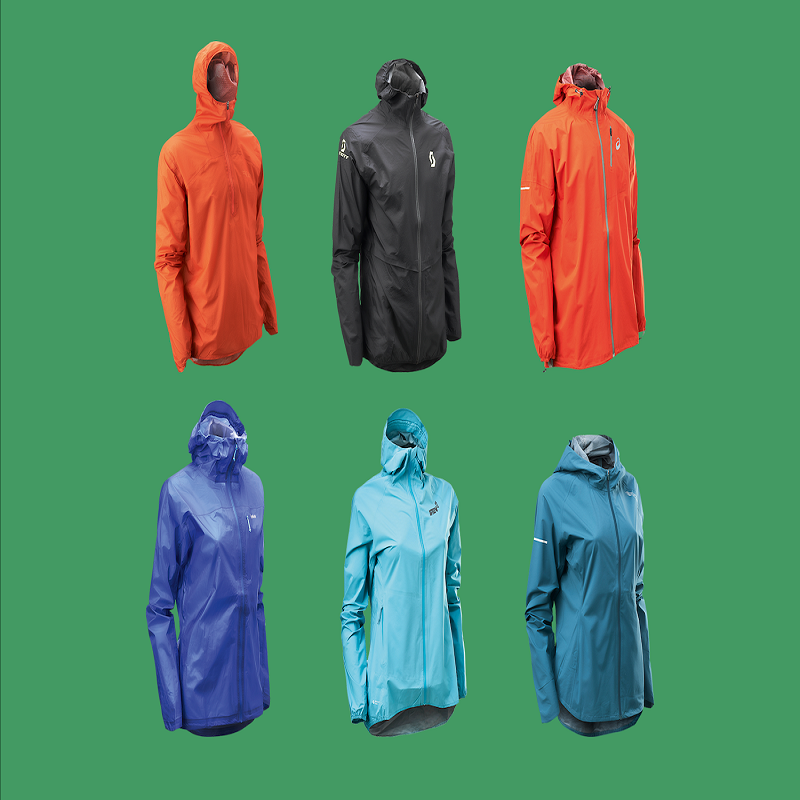
How to clean best running jackets
Running jackets are essential gear for athletes and outdoor enthusiasts, offering protection from the elements while ensuring comfort and breathability during workouts. However, these high-performance garments require special care to maintain their technical features, such as water resistance, breathability, and insulation. Improper cleaning can degrade the fabric’s advanced properties or cause damage, shortening the lifespan of your running jacket. This article provides a comprehensive guide on how to properly clean and care for your best running jackets, ensuring they remain in top condition for years to come.
1. Understanding the Fabric and Technology
Before diving into cleaning methods, it’s crucial to understand the materials and technologies used in running jackets. These factors determine how you should approach cleaning to avoid compromising their performance.
Advanced Materials
Modern running jackets are made from technical fabrics like polyester, nylon, or blends designed to wick moisture, repel water, and regulate temperature. Many feature DWR (Durable Water Repellent) coatings to shed rain and snow. Others may incorporate breathable membranes such as Gore-Tex or proprietary equivalents to allow airflow while blocking wind and precipitation.
Importance of Proper Care
Unlike regular clothing, running jackets rely on these specialized treatments to function effectively. Harsh detergents, high heat, or improper washing techniques can strip away DWR coatings, clog breathable membranes, or weaken seams. By following the correct cleaning procedures, you preserve the jacket’s functionality and extend its life.
2. Preparing Your Running Jacket for Cleaning
Proper preparation is the first step in ensuring a safe and effective cleaning process. Taking the time to assess your jacket and gather necessary supplies will help prevent damage during cleaning.
Check the Care Label
Always start by reading the care label inside your running jacket. Manufacturers provide specific instructions regarding washing temperature, detergent type, and drying methods. Following these guidelines ensures that you don’t inadvertently harm the fabric.
Inspect for Stains and Damage
Examine your jacket for any visible stains, dirt buildup, or signs of wear. Addressing these issues before washing prevents them from setting further into the fabric. Pay attention to areas prone to grime, such as the collar, cuffs, and zippers.
Gather Supplies
To clean your running jacket safely, you’ll need:
- A mild, non-biological detergent (preferably one formulated for technical fabrics)
- Cold water
- A soft-bristle brush or microfiber cloth
- A large basin or washing machine with a gentle cycle
- A clean towel
- A drying rack or hanger
Avoid using bleach, fabric softeners, or harsh chemicals, as these can damage the fabric and impair its technical properties.
3. Spot Cleaning Stains
Spot cleaning is an excellent way to address specific stains without subjecting the entire jacket to a full wash. This method is particularly useful for running jackets with minor blemishes.
Identify the Stain Type
Different stains require different treatments. Common types include sweat marks, mud, oil, or food spills. For example:
- Sweat stains near armpits or collars may benefit from pre-treatment with a mixture of cold water and mild detergent.
- Mud or dirt can often be brushed off gently after drying.
- Oil-based stains may require blotting with a solution of dish soap and water.
Apply Gentle Cleaning Solutions
For most stains, mix a small amount of mild detergent with cold water. Dip a soft-bristle brush or microfiber cloth into the solution and gently dab the stained area. Avoid scrubbing vigorously, as this could damage the fabric or remove the DWR coating. Rinse the treated area with clean water and pat dry with a towel.
4. Hand Washing Your Running Jacket
If your running jacket requires a more thorough cleaning, hand washing is the safest option. This method minimizes stress on the fabric and preserves its technical properties.
Step 1: Fill a Basin with Cold Water
Fill a large basin or sink with cold water. Hot water can cause shrinkage or damage the DWR coating, so always use cold water when cleaning technical fabrics. Add a small amount of mild detergent—about one teaspoon per gallon of water—and stir until dissolved.
Step 2: Submerge the Jacket
Place the jacket in the soapy water and gently press it down to ensure it’s fully submerged. Let it soak for 10–15 minutes to loosen dirt and grime. Avoid leaving it in the water for extended periods, as prolonged soaking can weaken the fibers.
Step 3: Gently Agitate the Fabric
Using your hands, gently agitate the jacket in the water. Focus on areas with visible dirt or stains. Avoid wringing or twisting the fabric, as this can stretch or distort the shape of the jacket.
Conclusion:
Selecting the best running jacket requires careful consideration of key factors such as fabric choice, weather resistance, fit, breathability, visibility features, pockets, and additional features. By choosing a jacket that meets your specific running needs and preferences, you can enhance your comfort, protection, and overall running experience. Remember, the perfect running jacket should provide the right balance of functionality, comfort, and style, allowing you to perform at your best while enjoying the run.

